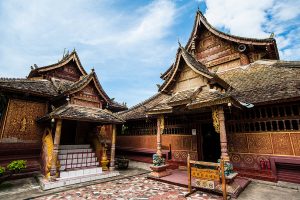Documented local protest:
“The activist told me that the farmers were fighting to preserve their traditional way of life.” -Jill McGivering, BBC
In Xishuangbanna itself, BBC journalist Jill McGivering covered a protest held by local farmers in 2008. The protest surrounded claims by the farmers that the Chinese government was allowing rubber companies to cut down protected forests to plant more rubber plantations.
During the protest, many protesters were jailed, and the reporter herself was detained (McGivering, 2008). Government officials commented that foreigners from surrounding countries were to blame for the lost of protected forests, not rubber companies. This is the most recent documented form of Xishuangbanna residents organizing themselves to combat removal of tropical forests.
Conservation Activism:

Within the religious communities in Xishuangbanna, of which there are many, quiet activism has been taking place to ensure the health and wellbeing of tropical forests in the region.
Buddhist temples in the region (of which there are over 500) have been focusing an effort on creating temple gardens, and educating young people on the names and importance of each plant, becoming essential for conservation of the tropical forests (Hongmao et al., 2002, p. 710).
The temples have been documenting the floral biodiversity in the region and holding classes to educate future leaders in the community, preventing the important and irreplaceable knowledge of tropical plants from being lost. In the future, these gardens will be invaluable to scientists who come to help restore and preserve the forests of Xishuangbanna.
